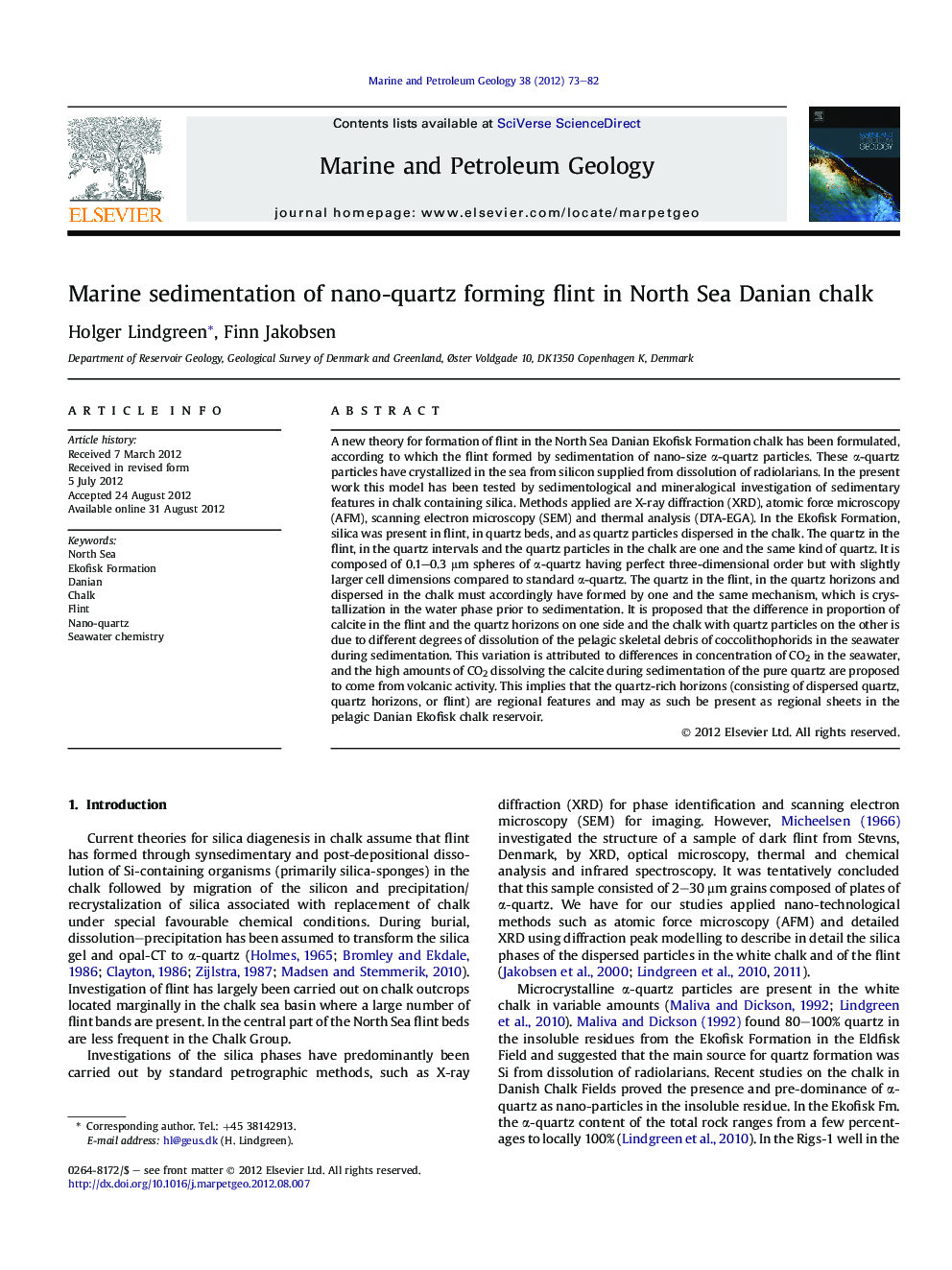| کد مقاله | کد نشریه | سال انتشار | مقاله انگلیسی | نسخه تمام متن |
|---|---|---|---|---|
| 4695947 | 1351646 | 2012 | 10 صفحه PDF | دانلود رایگان |

A new theory for formation of flint in the North Sea Danian Ekofisk Formation chalk has been formulated, according to which the flint formed by sedimentation of nano-size α-quartz particles. These α-quartz particles have crystallized in the sea from silicon supplied from dissolution of radiolarians. In the present work this model has been tested by sedimentological and mineralogical investigation of sedimentary features in chalk containing silica. Methods applied are X-ray diffraction (XRD), atomic force microscopy (AFM), scanning electron microscopy (SEM) and thermal analysis (DTA-EGA). In the Ekofisk Formation, silica was present in flint, in quartz beds, and as quartz particles dispersed in the chalk. The quartz in the flint, in the quartz intervals and the quartz particles in the chalk are one and the same kind of quartz. It is composed of 0.1–0.3 μm spheres of α-quartz having perfect three-dimensional order but with slightly larger cell dimensions compared to standard α-quartz. The quartz in the flint, in the quartz horizons and dispersed in the chalk must accordingly have formed by one and the same mechanism, which is crystallization in the water phase prior to sedimentation. It is proposed that the difference in proportion of calcite in the flint and the quartz horizons on one side and the chalk with quartz particles on the other is due to different degrees of dissolution of the pelagic skeletal debris of coccolithophorids in the seawater during sedimentation. This variation is attributed to differences in concentration of CO2 in the seawater, and the high amounts of CO2 dissolving the calcite during sedimentation of the pure quartz are proposed to come from volcanic activity. This implies that the quartz-rich horizons (consisting of dispersed quartz, quartz horizons, or flint) are regional features and may as such be present as regional sheets in the pelagic Danian Ekofisk chalk reservoir.
► Quartz in North Sea chalk.
► New model for formation of flint and nano-size spherical quartz particles in chalk.
► Formation by sedimentation of nano-quartz particles in the sea.
► Proportion of quartz determined by dissolution of calcite during sedimentation.
► Calcite dissolution probably due to acidification of the sea from volcanic eruptions.
Journal: Marine and Petroleum Geology - Volume 38, Issue 1, December 2012, Pages 73–82